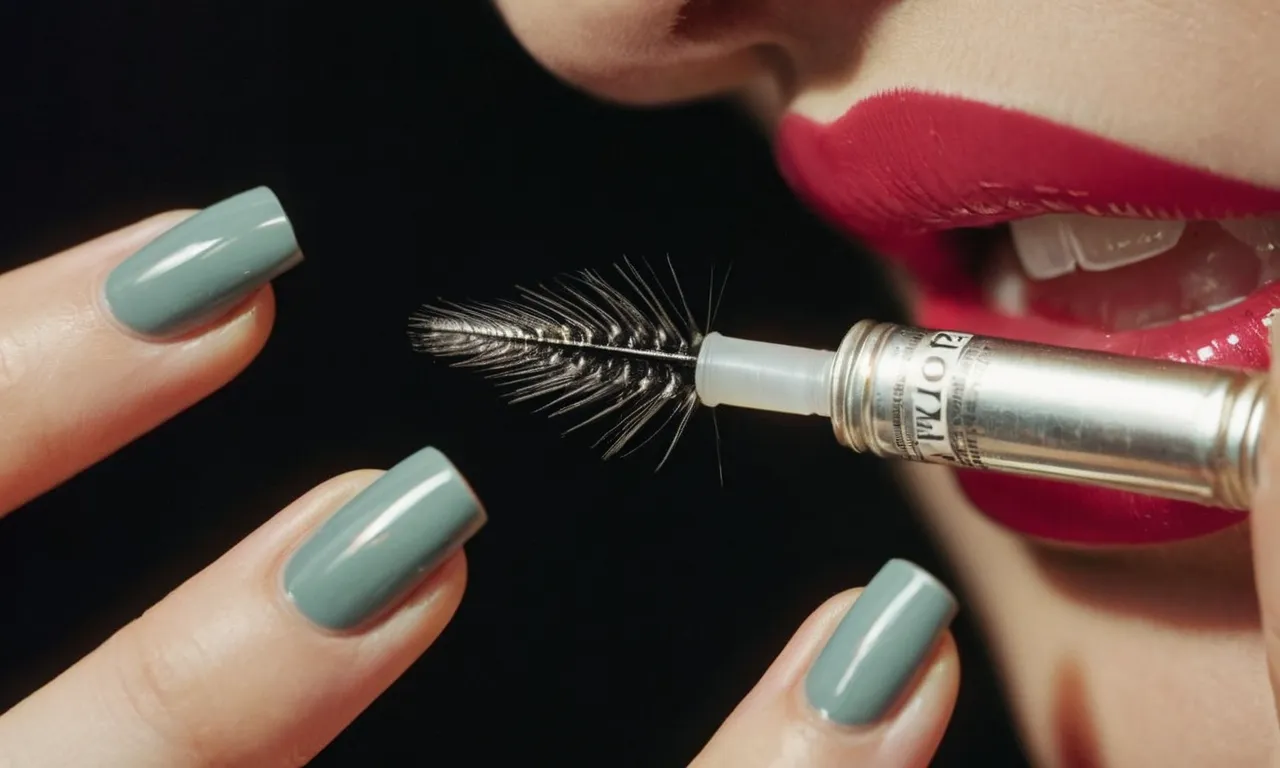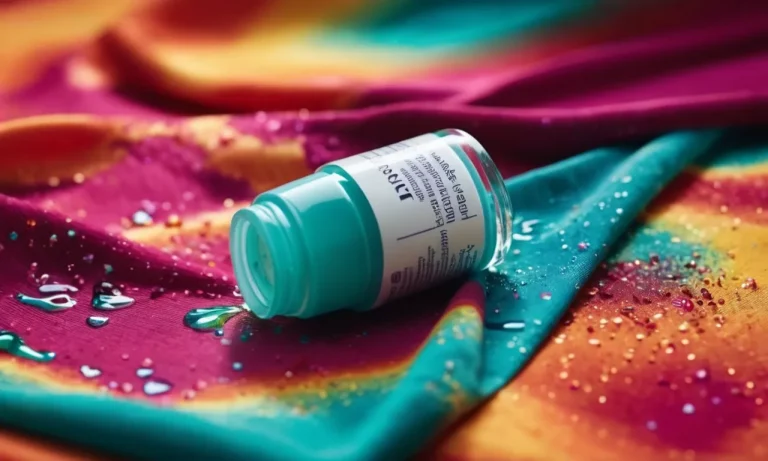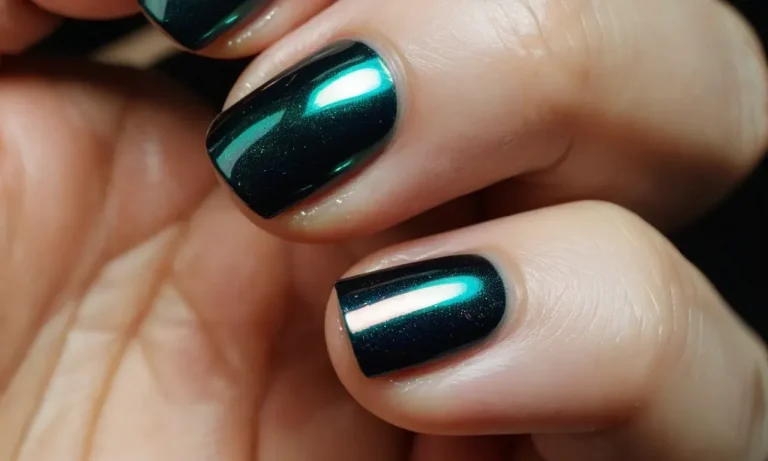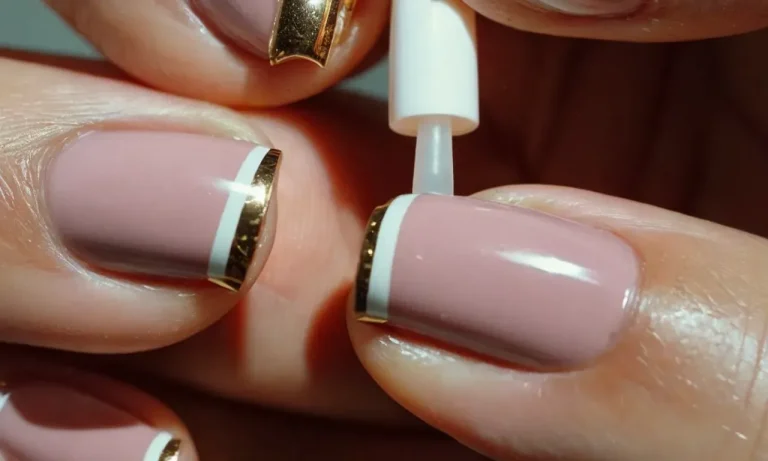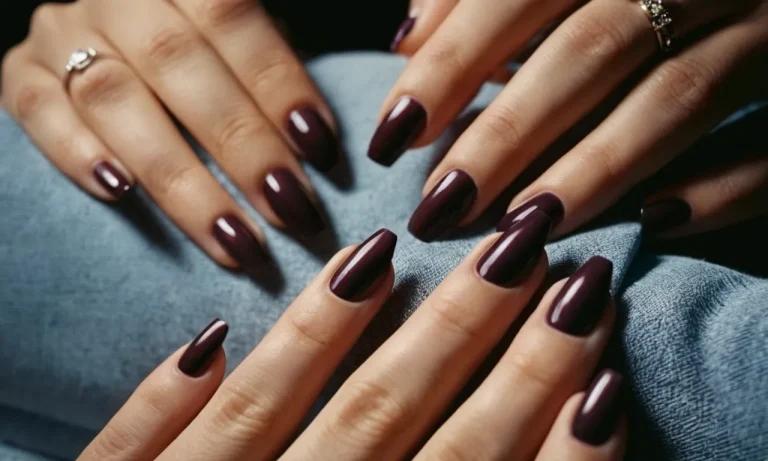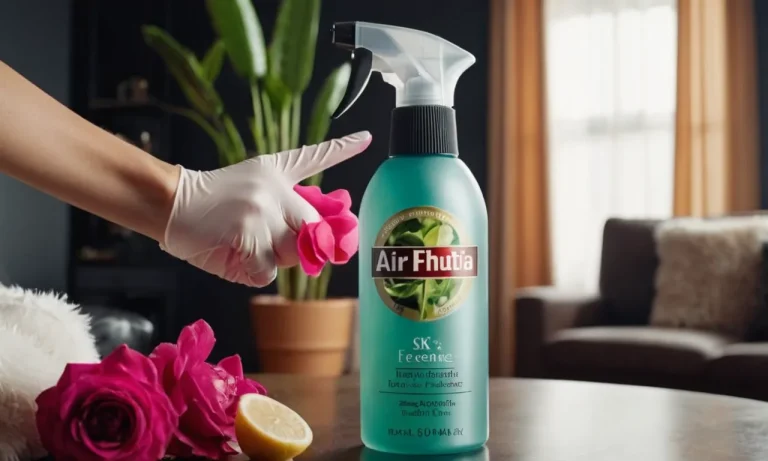Can You Use Nail Glue For Lashes? A Detailed Guide
If you’ve ever gotten eyelash extensions or considered DIYing the procedure to save money, using nail glue may seem convenient. But is it safe? Here’s a quick answer: nail glue contains chemicals that can irritate the sensitive eye area, so lash glue formulated specifically for eyes is highly recommended over household glues.
Nail Glue vs Lash Glue Ingredients
Formaldehyde in nail glue
Many nail glues contain formaldehyde as a preservative and to improve adhesion. Formaldehyde hardens the protein in nails, creating strong bonds between the false nails and natural nails. However, formaldehyde is also a known human carcinogen that can cause issues like eye and throat irritation or allergic reactions when exposure is high.
Using nail glues with formaldehyde close to your eyes when applying false lashes is not recommended.
A study by the National Institute of Health (NIH) found that around 30% of nail glues contain concerning levels of formaldeyde. Short term exposure may lead to headaches or irritation, while long term exposure is linked to nasal and lung cancer.
Lash glues marketed for use near eyes do not contain added formaldehyde. Instead, they use cyanoacrylate adhesives to securely bond lashes while minimizing risks if the formula transfers to the eyes. Using a proper lash glue instead of nail glue reduces health risks.
Cyanoacrylate in both glues
The key ingredient in both lash glue and nail glue is cyanoacrylate. This fast-drying adhesive creates strong bonds between surfaces in just seconds. Both types use similar cyanoacrylate formulas.
However, lash glues contain additional ingredients to make them safer and gentler for use near eyes:
- Thickening agents like polymethyl methacrylate to help the tiny brush hold more glue.
- Plasticizers to increase flexibility after drying.
- Acid stabilizers to extend shelf life.
- UV blockers to prevent damage if exposed to some sunlight.
So while the base cyanoacrylate adhesive is similar, lash glues contain extra ingredients for safe, effective use on lashes. Using an actual lash glue reduces health risks and improves results compared to substituting nail glue.
An analysis by Allure found that proper lash glues must adhere to strict safety regulations in the US and EU to ensure no eye irritation or harm with reasonable use. No such oversight exists for using nail glue near eyes.
| Nail Glue | Lash Glue |
| Often contains formaldehyde | Does not contain added formaldehyde |
| Brushes often too large for lashes | Precise, tiny brushes |
| No safety testing for use near eyes | Strict safety testing and regulations |
While lash glue and nail glue share cyanoacrylate as the primary adhesive, lash glues contain additional ingredients to maximize safety and performance for applying false lashes. Using an actual lash glue is always the best option.
Using Nail Glue for Lashes Dangers
Eye irritation
Using nail glue to apply false lashes can irritate the sensitive tissue around the eyes. The fumes from the nail glue contain chemicals that can cause stinging, redness, and watery eyes. Some people may even experience blurred vision if the glue gets into the eye.
This reaction can range from mild to severe depending on the individual and the type of nail glue used. Cyanoacrylate, the active ingredient in most nail glues, is known to be an eye irritant, so caution should be used when applying it near the eyes.
To avoid eye irritation, it’s important to apply nail glue in a well-ventilated area and avoid letting it make direct contact with the eyes.
Allergic reactions
For those with sensitive skin or allergies, nail glue can cause allergic reactions around the eyes. Some symptoms include redness, swelling, itching, and hives. This is often caused by an allergy to cyanoacrylate or other chemicals present in the nail glue formula.
Allergic reactions can develop immediately after using the nail glue or may take a few hours to appear. In rare cases, a severe allergic reaction known as anaphylaxis is possible which can cause throat swelling, difficulty breathing, and a drop in blood pressure.
People who suspect they may be allergic to nail glue should do a patch test on their arm before applying it to their eyes. If any reaction occurs, it’s best to avoid using nail glue as lash adhesive.
Damage to natural lashes
Using the wrong nail glue can damage natural lashes and cause them to fall out prematurely. Most nail glues are designed for adhesion to the hard surface of nails. They can be too harsh for use on delicate lashes.
The ingredients may dissolve the proteins that make up natural lashes, causing brittleness, breakage, and lash loss over time with repeated use. The difficulty removing nail glue can also lead to accidentally pulling out natural lashes.
Even if the false lashes are removed properly, leftover glue stuck to natural lashes can weigh them down. Vigorously scrubbing to get residual glue off risks lash breakage. Lash experts recommend using a specialized lash adhesive designed for use on human lashes rather than regular nail glue.
These adhesives are formulated to gently attach to lashes while allowing for easy, damage-free removal.
While using nail glue for lashes may seem like a quick fix, it carries potential risks of eye irritation, allergic reactions, and lash loss. Specialty lash glues sold at beauty retailers like Arctic Fox are safer, more effective options for applying false lashes.
With the right adhesive, you can avoid the dangers of using household craft glues on the delicate eye area. Handle lashes gently, follow directions carefully, and remove adhesives properly to maintain beautiful natural and falsies for a stunning look.
When in doubt, consult a professional lash technician for advice and services.
Proper Lash Glue Application
Choosing the right glue
When selecting a lash glue, it’s crucial to pick one specifically formulated for eyelash extensions that offers maximum hold throughout wear without damaging your natural lashes. The best glues provide a tacky base for the extensions while still allowing for safe, easy removal when desired (source).
Ideal glues are latex-free to avoid irritation and set to a glossy, flexible finish within 60 seconds. Darker toned glues like black or brown can camouflage better on the lash line. Let your eyelash stylist recommend a high-quality salon brand glue tailored to your lashes.
Applying the glue
Apply a thin layer of glue along the lash extension band, taking care not to oversaturate or use globs that can risk bonding the natural lashes. Only a small drop spread thinly with a tool is needed for each extension.
Allow 30-60 seconds for the glue to get tacky before adhering the extension along the natural lash line, placing as close to the base as possible without touching the skin. Be very precise in isolating one extension piece per natural lash and resist any temptation to quickly “clump” or force multiple extensions excessively close together.
This risks natural lash damage and uneven bonding.
Drying and curing times
The initial hold will be fairly good immediately, but full curing and extremely secure bonding takes 24-48 hours as the glue continues hardening (source). Avoid water, oil, orrubbing for at least 24 hours.
Do not attempt to remove or adjust extensions during this period as it can pull out natural lashes or weaken bonding results. If you experience any burning, stinging, or itching during curing, contact your stylist immediately as you may be reacting to fumes or ingredients.
Properly chosen medical-grade glue paired with precise isolate lash extension application techniques allows clients to enjoy a beautiful look for 4-8 weeks with suitable aftercare.
Caring for Lashes and Glue
Cleaning tools and lashes
Proper cleaning of eyelash application tools and lashes is crucial for avoiding infections and keeping lashes looking their best. Here are some tips for cleaning:
- Use an eyelash brush to gently brush lashes each day to remove makeup, oils, and dirt. Brushing also helps maintain the shape of the lashes.
- Clean eyelash curlers regularly with isopropyl alcohol to disinfect.
- Soak eyelash applicators and tweezers in isopropyl alcohol for 5-10 minutes to disinfect after each use.
- Never share applicators or tweezers to prevent spreading bacteria and infections like styes.
- Replace eyelash glue every 2-3 months to avoid eye irritation from old, contaminated glue.
Avoiding oil-based products
Oil-based skin and makeup products can break down the glue holding lashes in place, so it’s best to avoid them:
- Use oil-free makeup remover when taking off eye makeup.
- Look for oil-free moisturizers and avoid putting oils like coconut oil close to the lash line.
- Don’t apply eyelash glue right after using an oil-based eye cream, which can prevent the glue from bonding properly.
Water-based, oil-free products are best for lash glue longevity. Being careful about oils can help lashes stay put for their full 2-4 week lifespan.
Gently removing glue
When it’s time to remove lashes, be gentle to avoid pulling out natural lashes:
- Apply eyelash glue solvent to the bond between the false and real lashes. Let it sit for 10-30 seconds to dissolve the dried glue.
- Hold the false lash gently with tweezers and slide it off. Don’t pull too hard.
- Use your fingers to gently roll off any remaining dried glue. Don’t pull it off.
- Use olive or coconut oil on a cotton pad to remove residual glue. Be careful to avoid getting oil in your eyes.
Patience is key when removing eyelash glue. Rushing can remove natural lashes and damage the delicate eyelid skin. Take your time and gently dissolve the glue for easy, painless removal of falsies.
When to See a Doctor
Signs of infection
Using nail glue to apply false eyelashes comes with some risks. If the glue gets into your eyes, it can cause irritation, redness, pain, and potentially infection. Here are some signs that you may have an eye infection from using nail glue on lashes:
- Redness in the eyes or eyelids
- Swelling of the eyes or eyelids
- Eye pain or soreness
- Itching or burning sensation in the eyes
- Excessive watering or discharge from the eyes
- Feeling like something is stuck in your eye
- Blurred vision
- Light sensitivity
- Crusting on the eyelashes or eyelids
If you experience any of these symptoms after using nail glue for lashes, you should see an optometrist or ophthalmologist right away. An eye doctor can examine your eyes to determine if you have an infection and prescribe antibiotic eye drops or ointments to clear it up.
Leaving an eye infection untreated could lead to permanent damage.
Some signs that indicate an urgent need to see a doctor include intense eye pain, vision changes, or discharge from the eye. These could signal a corneal abrasion or ulcer that requires immediate medical care to prevent blindness.
Allergic reactions
Some people may be allergic to the ingredients in nail glue, especially the cyanoacrylate found in most brands. Allergic reactions can develop immediately after using the glue or after repeated use over time. Here are symptoms of an allergic reaction:
- Red, itchy, swollen, or irritated eyes
- Runny nose, sneezing, or stuffy nose
- Itchy, red, or irritated skin around the eyes
- Hives or rash on the face
- Wheezing or difficulty breathing
If you experience a severe allergic reaction with systemic symptoms like hives, swelling, or trouble breathing after using nail glue on lashes, seek emergency care right away. Milder allergy symptoms like isolated eye redness, itching, or stuffy nose can be managed with antihistamines and eyedrops, but you should still see an allergist to be tested for cyanoacrylate allergy if this occurs.
To avoid complications, it’s best to discontinue use of the nail glue and switch to a medical-grade, eyelash-safe adhesive. Repeated exposure could cause the allergic response to worsen over time. And always do a patch test before using a new eyelash glue product by applying a small amount to your arm and watching for any reaction.
Conclusion
While using household nail glue to apply lashes may seem like an easy shortcut, lash glues are specially formulated to be safe for the sensitive eye area. Using the proper products and application techniques can help you avoid damage and reactions.

